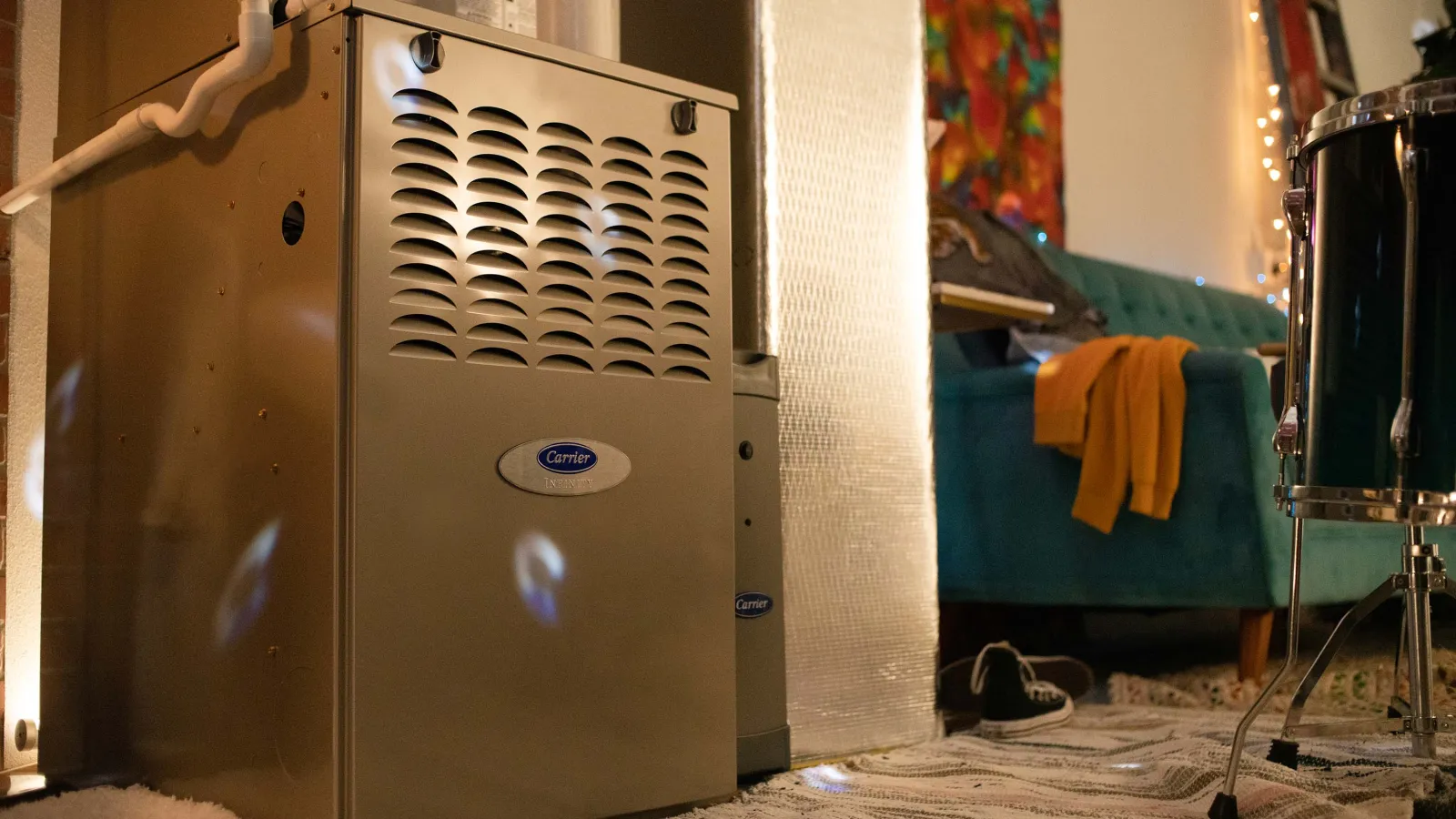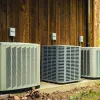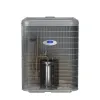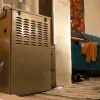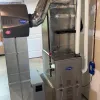When it’s cold outside, you need your heater to work. Whether you’re using a heat pump or a gas furnace, broken equipment means it’s time to pull out the space heaters, put on thick jackets, and endure a whole lot of discomfort. At least until your HVAC guy shows up.
But why doesn’t your heat turn on? What’s keeping your equipment from working properly – and how serious is the problem?
At PV Heating, Cooling & Plumbing, we receive a lot of “no heat” calls between December and February. If you’re having trouble with a furnace or heat pump in your Atlanta area home, our team can help!
While there are several reasons your heat pump or furnace might not be working, these are the most common ones:
1. Lack of maintenance
Lack of maintenance is probably our #1 source of service calls during the winter. It’s the most likely reason your heat won’t turn on.
And more often than not, the problem is that your furnace is just plain dirty:
- A dirty blower motor can lead to equipment failure. The heat exchanger won’t work unless enough cool air moves across it to keep it from overheating. When the motor is dirty, the heat exchanger isn’t exposed to enough moving air. It’ll go kaput.
- Dirty air filters restrict airflow and can amplify existing problems with improper duct sizing. You need to change your filters every 90 days or so.
- If you’ve got a dirty flame sensor, your system won’t be able to light the burners. The flame sensor won’t “sense” the flame, so it will cut off as soon as it turns on. The less often you clean the system, the more likely you are to cover your flame sensor in a thick layer of gunk.
- Dirty burners can make it hard for your furnace to operate properly. It might still work, just not very well.
The solution? Have an HVAC professional clean your system every year! Annual maintenance ultimately pays for itself because you won’t have to deal with the inconvenience or discomfort of a non-functioning furnace. In the case of premature equipment failure, maintenance also helps you avoid replacing expensive parts.
2. Too much gas
Furnace manufacturers have specs for how much gas their equipment should burn. You’ve got to calibrate the equipment during installation to make sure it works properly. Otherwise, it might stop working at an inconvenient time.

Like when it’s less than 20 degrees outside. And icy. And the wind is howling.
Sometimes, improperly calibrated furnaces burn too much gas.
When this happens over a long enough period, two things can happen:
- You overpay for gas during the winter
- The furnace overheats, causing it to cycle on a limit switch
We get calls when #2 happens – especially on really cold days when the furnace can’t keep up. That’s why we always perform a combustion analysis during our annual furnace inspections. It tells us whether your furnace is burning too much gas.
3. Dead blower capacitor
Have you ever seen your blower capacitor? It usually looks like a big battery.
Anyway, the capacitor starts your furnace when the thermostat setting tells it to turn on. Capacitors have tolerance levels. If the tolerance is below a certain level, your blower might not achieve the proper RPM. In some cases, the capacitor just won’t start the blower. The worst-case scenario? A dying capacitor leads to a blower malfunction, which is a costly repair.
Either way, your heat won’t turn on.
Since capacitor failure is so common, we always check the tolerance of your capacitor(s) during routine inspections. If they’re on their way to a slow death, we’ll let you know it’s time to replace them.
4. Low refrigerant levels
Heating your home with a heat pump? If you are, your refrigerant level can get a bit too low. When that happens, your heat strips might come on more often than you want them to.
And we all know that heat strips can lead to exorbitant utility bills. Not good.
If you recognize your heat strips coming on with increasing frequency, it might be time to increase your refrigerant charge. If the level is too low for too long, the compressor might overheat and fail.
It’s much less costly to recharge the refrigerant (and fix any leaks) than to replace your compressor (and deal with having no heat). In some cases, it might even be more cost-effective to replace the system with a new one that uses a newer, R-410A refrigerant!
In any case, always keep an eye on your auxiliary/strip heat status in the winter.
5. Dead starting components (heat pump)
While we’re on the subject of heat pumps, let’s just acknowledge that all kinds of components can go bad for any number of reasons. Failed starting components, in particular, can prevent your blower (indoor unit) or outdoor unit from starting properly. The system won’t heat your home, and you’ll need to replace the bad parts.
Again, proper maintenance and regular inspection can help you identify problems with these components before they fail. You’ll avoid costly repairs in the future.
6. Bad inducer draft motor
Also known as a “draft inducer,” this little motor exists to help clear the heat exchanger of leftover gas from a prior cycle and vent all gases produced during the furnace’s combustion process.
If the inducer motor starts pulling high amps, it can eventually burn out. It can also get dirty over time, which causes safety switches to cut the furnace off. During tune-ups, we check the draft to make sure the inducer fan motor is working properly.
Anyway, you’ve got to replace it when it goes bad. Whenever we replace a draft inducer, we also take samples from the flue gas to test the efficiency of your burners and the integrity of your heat exchanger.
Speaking of heat exchangers…
7. Cracked heat exchanger
Ok, a cracked heat exchanger won’t always lead to furnace failure – at least not right away.
Still, we want to mention it here because:
- It can impact the efficiency of your system, which you might notice when it gets bad enough.
- Cracked heat exchangers are sometimes indicative of another problem that could cause your furnace to fail, like low airflow due to dirty components.
- It’s a really dangerous problem to have. If you’ve got a cracked heat exchanger, you need to replace it.
The thing about heat exchangers is that there is carbon monoxide (CO) inside of them. When they crack, the CO leaks out. CO can make you sick, and it can even be fatal in serious cases. The bottom line: You should always replace a cracked heat exchanger or just replace your furnace if it’s past its prime.
8. Improper ductwork design and/or installation
Sometimes, the problem isn’t your heater at all. It’s your ductwork.
Proper ductwork design and installation is a major undertaking. Unfortunately, many builders and HVAC contractors cut corners or rely on rules of thumb (instead of building science) when sizing and installing ducts. When you’re lucky, you end up with ductwork that’s kind of the right size and installed more or less properly. The system might not operate at peak efficiency, but it will work.
But when they do a really bad job – and it happens! – you’ll never achieve proper airflow throughout your home. Not only will it be hard to stay comfortable, but your furnace will short cycle more often. Over time, it might even overheat. And fail.
The solution is to fix whatever HVAC equipment components failed and redesign your ductwork to the extent possible. Otherwise, you might have the same problem again.
Heat won’t turn on? Give us a ring.
If you live in the Atlanta area and your heat isn’t working properly, we’re more than happy to come out and diagnose the problem. Just get in touch! If you’re looking to prevent potential equipment failure (a smart move), our service agreements include an annual furnace or heat pump inspection.
Service agreements also make you a priority client. When you have a service agreement with PV Heating, Cooling & Plumbing, we push you to the top of the list whenever there’s a service call!
All in all, it’s more economical to inspect your system each year than to replace an expensive component down the line. And a clean bill of health on your furnace means a comfortable winter free from HVAC problems.
If you’ve had a furnace fail in the past, you know what we’re talking about.
